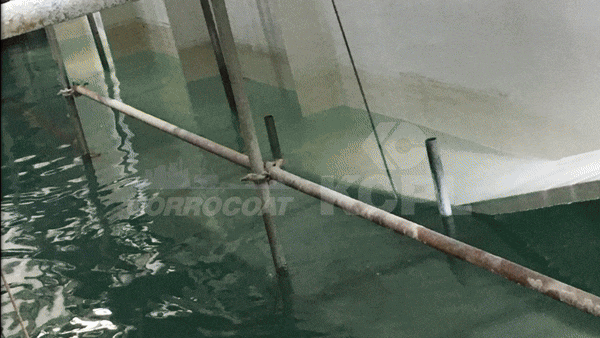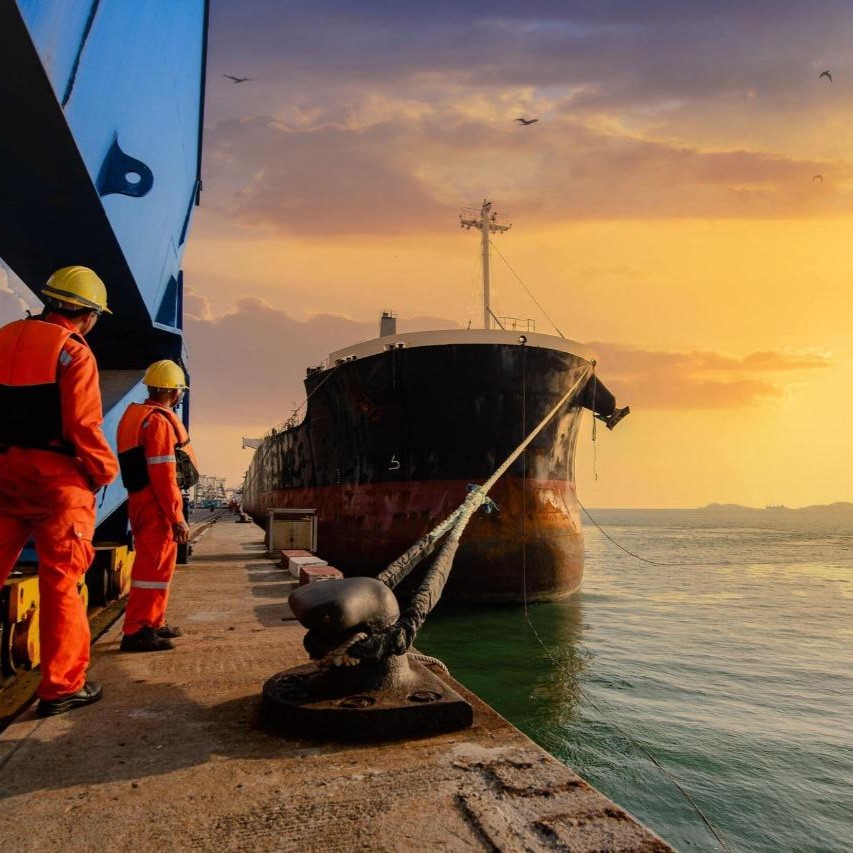A distinguishing feature of the marine environment is the universally present high salt content in the air and seawater which acts as a catalyst for the corrosion of offshore structures, such as offshore oil rigs, Intake Pump Houses in Thermal Power Plants Handling Sea Water. Corrosion damage in these environments is also influenced by the presence of other chemicals and various pollutants in the seawater, air and ports and many other areas. The corrosive forces inherent in marine environments pose significant threats to the integrity and longevity of metal structures. In this technical blog, we explore the complexities of corrosion, its detrimental effects, and the imperative role of corrosion protection strategies using Kirloskar Corrocoat in safeguarding marine assets.
Understanding Corrosion:
corrosion refers to the natural process of deterioration that occurs when metallic structures, components, or equipment are exposed to the harsh conditions prevalent in marine environments. This deterioration is primarily driven by electrochemical reactions between the metal and its surroundings, which typically consist of high levels of salt, moisture, and other corrosive agents present in seawater and marine atmospheres.
The Significance of Corrosion Protection in the Marine Industry:
The harsh conditions prevalent in marine environments make ships and metallic infrastructure susceptible to corrosion. Left unchecked, corrosion can compromise the structural integrity of vessels and structures, posing safety hazards and necessitating costly repairs. Mild steel, commonly used in marine construction for its affordability and strength, is particularly prone to corrosion, making corrosion protection imperative for the longevity of marine assets.
Protective Measures:
Manufacturers and operators within the industry take various precautions to protect their assets such as vessels and offshore structures from corroding. We will explore some of the standard methods utilised to protect metallic structures in the marine environment.
1) Design
Ship and infrastructure designers and operators make an effort to reduce corrosion and keep them secure, which aids in extending the lifespan of the structure or vessel. A few design features can assist in reducing the rate of corrosion and in turn reducing the required maintenance costs, including:
- The placement of drains aids in the draining of water from decks, wells and low-lying areas. This eliminates a direct cause of corrosive activity.
- In an effort to reduce galvanic corrosion, insulation is set up in areas where different metals are placed close to one another. Impressed current systems that monitor corrosive cell activity and apply currents to protective anodes can be installed to detect and manage corrosion.
- Insulation is required in locations where temperature shifts, stopping thermal fatigue.
However, Design changes alone are often unreliable in fully protecting marine equipment from corrosion. While they may address specific vulnerabilities, they may not comprehensively account for the dynamic and multifaceted nature of marine environments. Maintenance challenges, cost considerations, and long-term effectiveness further contribute to their limitations. A holistic approach, combining design improvements with other corrosion mitigation strategies such as Glass flake Coatings and rigorous Maintenance, is essential for effective corrosion management in the marine industry.
2) Glass flake Coatings
Glass flake coating is widely regarded as the optimal solution for corrosion prevention in the marine industry due to its following outstanding properties.
-
Exceptional Barrier Protection:
Glass flake coatings are highly regarded for their ability to create a dense barrier, effectively shielding metal surfaces from corrosive elements such as saltwater and moisture.
-
Mechanical Strength:
These coatings exhibit exceptional mechanical strength, providing robust protection against abrasion, impact, and wear in the harsh marine environment.
-
Chemical Resistance:
Glass flake coatings demonstrate high resistance to a wide range of chemicals commonly found in marine environments, ensuring long-term durability. They effectively cover a wide pH range, from 1 to 14, making them suitable for various applications.
-
Strong Adhesion Properties:
With strong adhesion to metal substrates, glass flake coatings ensure the longevity and integrity of the coating system, even in challenging conditions.
-
Cost-effective Solution:
Glass flake coatings offer long-lasting corrosion protection with minimal maintenance requirements, providing a cost-effective solution for preserving marine assets.
-
Flexibility and Versatility:
Their flexibility allows for seamless coverage of complex marine equipment and structures, making them suitable for various applications.
A specially designed non-toxic, anti-fouling coating, called “Corrocoat Biofoul” forms a durable barrier that inhibits the attachment and growth of algae, barnacles, and other fouling organisms. By minimizing biofouling, this innovative coating helps maintain the efficiency and performance of marine equipment and structures, extending the service life of assets.
Kirloskar Corrocoat and Corrosion Management:
Kirloskar Corrocoat has developed product lines that ensure they offer superior corrosion resistance for equipment and infrastructure surfaces exposed to harsh marine environments. With the right protective coating, seawater is not aggressive – our coatings withstand long-term exposure to high levels of salt for extended periods.

Marine components we coat include:
|
|
In conclusion, corrosion poses a significant challenge for those working within the marine industry, necessitating proactive measures to protect valuable assets. By embracing corrosion management strategies such as those offered by Kirloskar Corrocoat, stakeholders can mitigate the detrimental effects of corrosion and ensure the durability and reliability of marine infrastructure for years to come.


